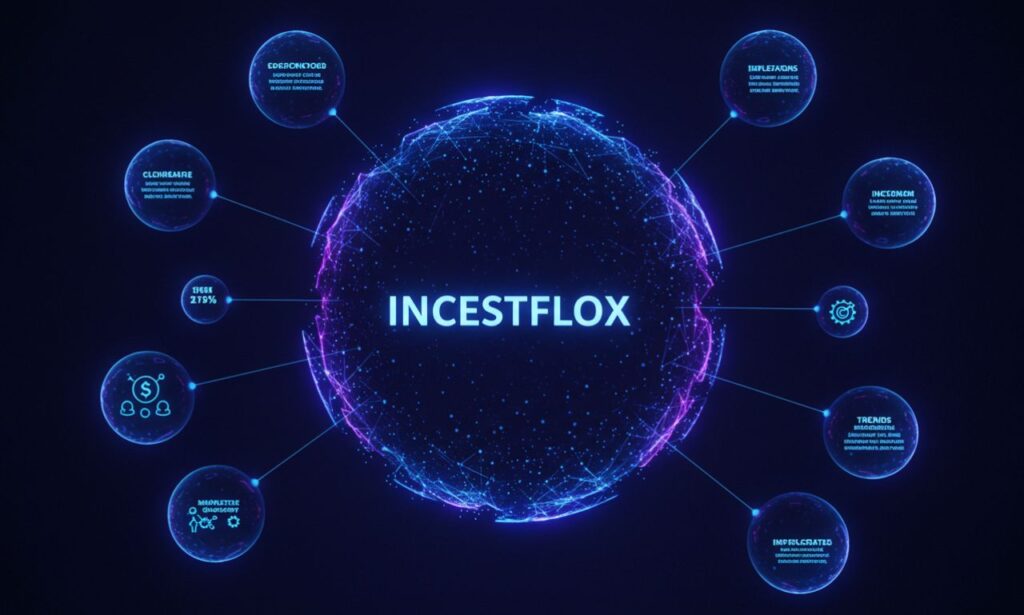The term Incestflox has recently gained attention in digital forums, academic circles, and social debates. While relatively new, it touches on highly controversial themes, blending taboo subjects with the evolving dynamics of internet subcultures. In this article, we aim to unpack the meaning of Incestflox, its emergence, and the broader implications it holds for society, mental health, and digital ethics.
What Is Incestflox?
Incestflox is a portmanteau that appears to represent a fusion of “incest” and a suffix used in digital or medical trends like “-flox.” Though the term is still evolving, early uses indicate it refers to online communities or content centered around incest-themed narratives, fiction, or fantasies. It may also relate to algorithmically driven exposure to incest-related content, particularly on adult platforms or obscure digital forums.
These spaces often blur the line between fiction and reality, sparking intense ethical debates and raising legal red flags.
Online Origin and Growth of Incestflox Communities
The concept of Incestflox appears to have roots in fringe online communities, where algorithmic recommendations or content “rabbit holes” can draw users toward taboo material. It’s often discussed alongside other controversial trends like goreflox or shockflox, referring to highly explicit and potentially disturbing online content ecosystems.
This phenomenon seems to grow through platforms with loose moderation, where content tags, recommendations, and search loopholes expose users to this type of media. While some users claim to explore such topics for curiosity or shock value, others delve deeper, forming niche communities that can foster normalization of problematic themes.
Incestflox and Algorithmic Exposure
One of the most alarming aspects of Incestflox is the way content algorithms may unintentionally push users toward increasingly explicit material. On video platforms, adult content sites, or even meme-sharing networks, engagement-driven algorithms can gradually escalate what users see.
This isn’t unique to incest-themed content; however, Incestflox exemplifies how unchecked algorithms can magnify fringe interests. Studies in digital psychology suggest that repeated exposure may lower the perceived shock or taboo of such material, a concept known as desensitization.
Psychological Impact of Incestflox Exposure
The psychological consequences of exposure to Incestflox-related material can vary depending on the viewer’s background, age, and mental health condition. Potential effects include:
-
Desensitization to taboo themes: Repeated exposure can reduce emotional reactions to extreme content.
-
Cognitive dissonance: Users may struggle to reconcile their values with the media they consume.
-
Fetish development: In rare cases, exposure may contribute to the development of unconventional or harmful fetishes.
-
Emotional numbing: Prolonged interaction with shocking content can blunt emotional responses more broadly.
While not everyone who encounters Incestflox material is adversely affected, it does raise serious concerns for vulnerable users, particularly adolescents and those with underlying psychological conditions.
Legal Dimensions of Incestflox Content
Incestflox-related content may enter legally gray or even clearly illegal territory, depending on its nature and the jurisdiction. For example:
-
Fictional content featuring incestuous themes may be protected under free speech laws in some countries, while banned in others.
-
Real-life material involving familial relationships is illegal in many places, especially if it involves minors or non-consensual activity.
-
Platform liability is also under scrutiny, as digital services hosting such material could face regulatory consequences.
Policymakers and legal experts are calling for clearer legislation around taboo digital content and its distribution mechanisms.
The Role of Content Moderation
Social media companies and content platforms are increasingly being held accountable for the material shared on their sites. In the context of Incestflox, moderation becomes a delicate balance between freedom of expression and the prevention of harmful content.
Challenges in moderation include:
-
Ambiguity in content: Incestflox content often appears in fictional or coded formats, making it harder to detect.
-
Evasion techniques: Creators may use euphemisms or coded language to avoid filters and detection.
-
AI moderation limits: Automated systems can struggle with context and nuance, leading to both under-blocking and over-censorship.
Ethical Implications of Normalizing Incestflox
At the heart of the Incestflox debate lies the question of ethics. Should platforms allow the existence of such communities? Are we heading toward a dangerous normalization of incestuous themes?
Key ethical issues include:
-
Moral boundaries: What responsibilities do content creators and platforms have to protect societal norms?
-
Freedom vs harm: How do we balance artistic freedom with the potential psychological or societal damage?
-
Cultural variation: What is taboo in one culture may not be in another, making universal regulation complex.
Experts warn that unchecked exposure to incest-centric content may contribute to the erosion of established moral taboos, which could have unpredictable long-term effects on societal cohesion.
How Parents and Guardians Can Address
Parental control is essential in protecting younger users from encountering Incestflox content. Given the subtle and sometimes algorithmic nature of exposure, parents are encouraged to:
-
Use robust content filters: Tools like SafeSearch, parental control software, and device restrictions can reduce risk.
-
Discuss online boundaries: Honest conversations about digital behavior can foster awareness and self-regulation.
-
Monitor media consumption: Keeping tabs on what content is being consumed helps identify red flags early.
More importantly, fostering open dialogue and trust ensures that children feel comfortable reporting disturbing content when they encounter it.
Combating Incestflox: What Platforms and Regulators Can Do
To reduce the proliferation of Incestflox, collaborative efforts are necessary between governments, tech companies, and digital advocacy groups. Potential actions include:
-
Stronger content policies: Updating guidelines to specifically address incest-themed or harmful fictional content.
-
Improved AI moderation: Investing in better context-aware AI tools that can identify harmful trends.
-
Transparency reporting: Platforms should publish regular reports on flagged content and moderation actions.
-
Public education campaigns: Informing users about the risks of taboo content and how to avoid falling into algorithmic traps.
Conclusion
The rise of Incestflox reflects the darker undercurrents of digital culture—where anonymity, algorithmic exposure, and a lack of oversight can foster disturbing trends. While the content may begin in fictional or artistic contexts, its psychological and ethical consequences are far-reaching.
Combating its spread requires vigilance, awareness, and a concerted effort to balance digital freedom with moral responsibility. By recognizing and understanding this trend early, society has a better chance of mitigating its impact before it becomes more deeply ingrained in online culture.






